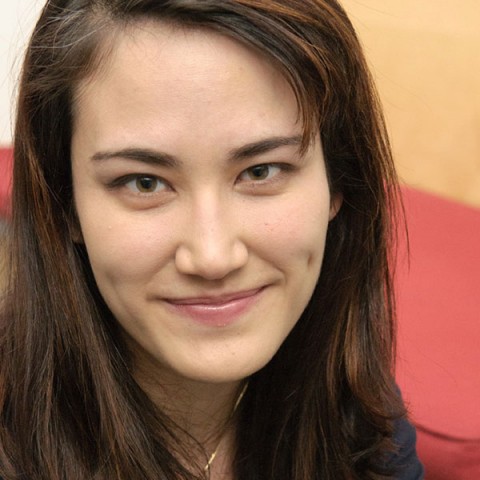At the PWC this week: Susan Soon He Stanton
Core Writer Susan Soon He Stanton is at the Playwrights’ Center for the first time this week, workshopping her play Seek with director Kip Fagan and actors Christina Baldwin, Kaipo Schwab, Tyler Tanabe, Robert Berdahl, Terry Hempleman, and Sasha Andreev. The public is invited to a reading of the play at 2 p.m. on Thursday, April 30. No RSVP is necessary. We asked Susan a few questions:
What have you been working on this year?
Takarazuka!!! at East West Players in Los Angeles (Fall 2014). Takarazuka!!! is set in the Takarazuka Women’s Revue in Japan, where women perform in lavish Broadway-style musicals. I began to research Takarazuka and became obsessed with the lurid and oddly compelling performances.
The Underneath at Kumu Kahua Theater in Honolulu (Fall 2014). The Underneath is about a man who returns home to search for his brother. When he arrives, nothing is the way he remembers and Honolulu becomes a dark unfamiliar backdrop. It’s exciting to do plays about Hawai’i in Hawai’i, where there’s an ethnically-diverse audience that I love to write for.
Why do you write plays?
Theater is the art of empathy. I don’t believe a reader experiences catharsis from reading a novel the same way he/she can watching a truly earth-shattering piece of theater. I believe the right theatrical experience can change someone’s life and reframe his/her perception. I have certainly experienced it personally as an audience member, and it’s a magical thing.
As a playwright, I can send an audience where I want. I am drawn to the plays of Chekhov where, while everyone drinks their tea, the world of the characters is breaking into pieces. A playwright can show lives changing through conversations.
What playwriting/theater advice do you have for others?
I’ve realized that even trusted colleagues are good at identifying the flaws of a play but their solution is not necessarily correct, and their conflicting advice can be confusing. Stay open-minded enough to examine the section of the play that draws criticism, but trust yourself enough to solve the problems within your own play.
Find your collaborators. Too often playwrights are separate from the rest of the people involved in putting the play onstage. Meet designers. Be not only a writer, but a theater artist. Find your way into the room and teach people that you belong there.
Who or what inspires you?
I am interested in creating emotionally truthful plays with a sense of spectacle. I am very inspired by the world created in the works of Kobo Abe, Irene Fornes, Jose Rivera, and Anne Washburn. I am drawn to the lyricism and sangre of Lorca, and the subtle beauty and horror in the plays of Naomi Wallace. I am moved by the way visual artist Martin Creed’s art installations “Half the Air in a Given Space” manifests space and air as breath and volume. I aspire to channel Frida Kahlo’s ability to create work that is emotionally raw and visually stunning.
What are you looking forward to this year, artistically?
I’m writing a radio play for the stage, every interaction takes place over voicemail, live radio, or phone, and I’m having fun exploring ways to keep it theatrical.
There’s also a new play that I’m researching. I’ve been a bit afraid to write it, and I want to give myself the freedom to dive in. If done right, it will be the largest and most political play I’ve ever written.
What is your writing process like?
Usually several dissonant things begin to percolate. Often it’s a historical event that becomes paired with something emotionally compelling. I do a lot of research for my plays but try to put everything away when I write.
I’m terrible at rewriting, and it feels good to find an elegant solution to a tricky problem in a play. In grad school Paula Vogel taught us that plays can be driven by different engines; a play might be character-driven or plot-driven or theme-driven, and so on. Lately, I’ve been thinking about trying to have a different dramatic element drive each new play.
What kind of theater or art excites you?
Theater that can only be theater. So much theater these days seems timid and easily transferable to TV or film.
I’m excited by any work of art that is immediately impactful, that does not have to be explained. And, I think, anything old that still feels new and anything new that is truly surprising.


 Facebook
Facebook Twitter
Twitter